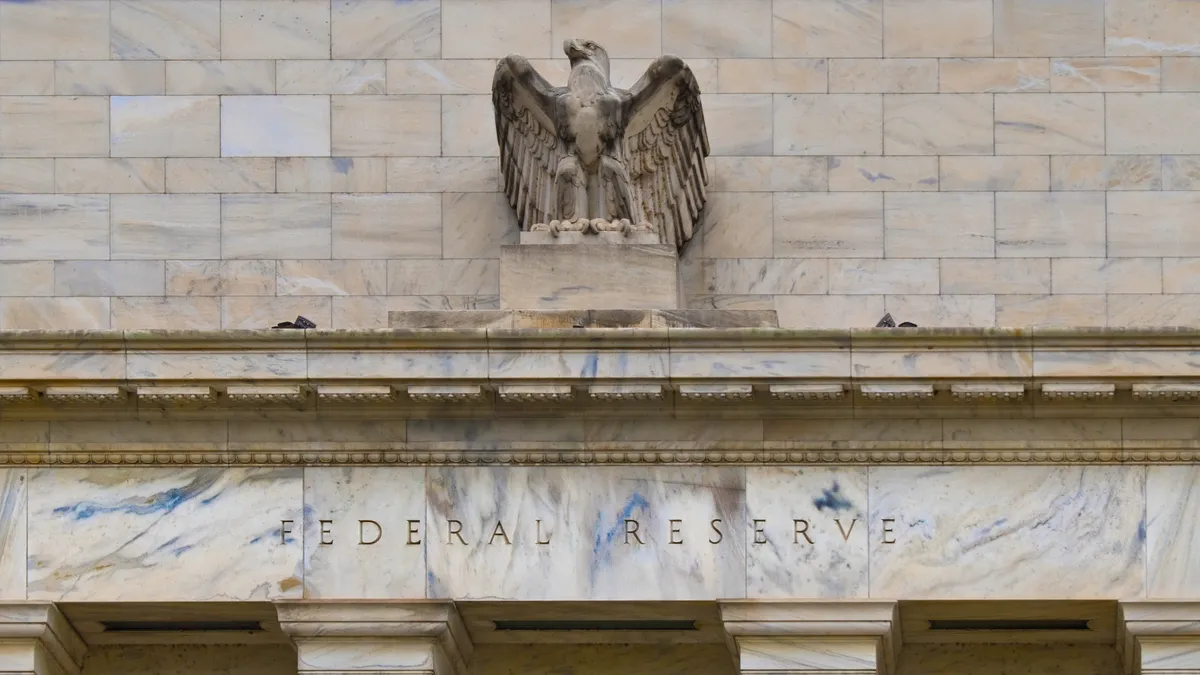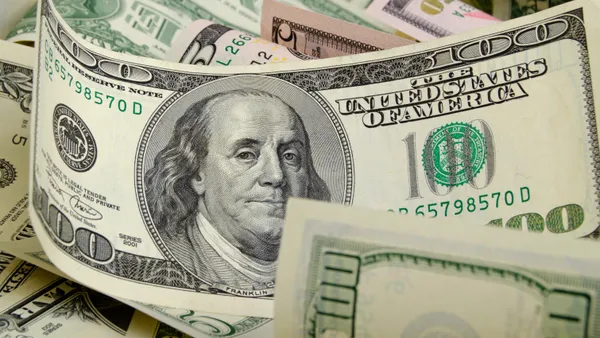Dive Brief:
- Federal Reserve Chair Jerome Powell on Wednesday said the central bank is holding the benchmark interest rate steady while determining whether tariff-induced inflation proves to be persistent or short-lived.
- “In a situation like this, where the process could go on for a long time, where the effects could be large or small, it's just something you want to approach carefully,” Powell said in testimony to the Senate Banking Committee, referring to the potential impact from the highest, most sweeping U.S. import duties since the 1930s.
- Under one scenario, price pressure from tariffs “comes in quickly and is over and done,” like the jolt from a surge in oil prices, Powell said. The Fed also needs to consider the risk that import duties may trigger “a process that goes on multiple shocks for years, for example, or if the shocks are very large,” he said.
Dive Insight:
Powell reminded the lawmakers that Fed officials on June 18 forecast that they expect to cut borrowing costs by a total of 0.5 percentage point by the end of 2025 despite higher price pressures from tariffs. Policymakers have held the federal funds rate at a range from 4.25% to 4.5% since December.
“A majority of my committee has said that they do expect to cut rates between now and the end of the year in the remaining four meetings” of 2025, Powell said.
Since the meeting of central bankers last week, two policymakers have said they may favor a quarter-point reduction at a scheduled gathering of Fed officials on July 29-30. They both warned of potential weakness in the labor market and noted that inflation has cooled.
During the same period, traders in interest rate futures have increased the odds of a quarter-point cut in the main interest rate next month to 24.8% from 12.5%, according to the CME FedWatch Tool.
“We have to be humble about our estimates” on the impact of tariffs on inflation, Powell said. “One of the reasons why it is so challenging is that there really isn’t a modern precedent” to import taxes of the size set by the Trump administration.
As of June 17, consumers face an overall effective tariff rate of 15.8%, the highest level since 1936, according to the Yale Budge Lab.
If tariffs remain at current levels, consumer prices would rise 1.5% in the short run, effectively eroding the income of the average household by $2,000, the Yale Budget Lab said on June 17.
The import duties would disproportionately push up the prices of clothing and textiles, with shoe prices rising 33% and apparel prices increasing 28% over the short run, according to the Yale Budget Lab.
Fed policymakers are not prejudging the duration of inflation fueled by tariffs, Powell said.
“We are very open to the possibility that transmission through into inflation will be less than we think, or maybe more than we think, which is why we're in a position of wanting to take our time and make a smart decision as we see how this unfolds,” he said.
In testimony Tuesday to the House Financial Services Committee, Powell did not rule out a rate cut at the scheduled meeting of policymakers next month.
“If it turns out that inflation pressures do remain contained, then we will get to a place where we cut rates sooner rather than later,” he said. “But I wouldn’t want to point to any particular meeting.”















